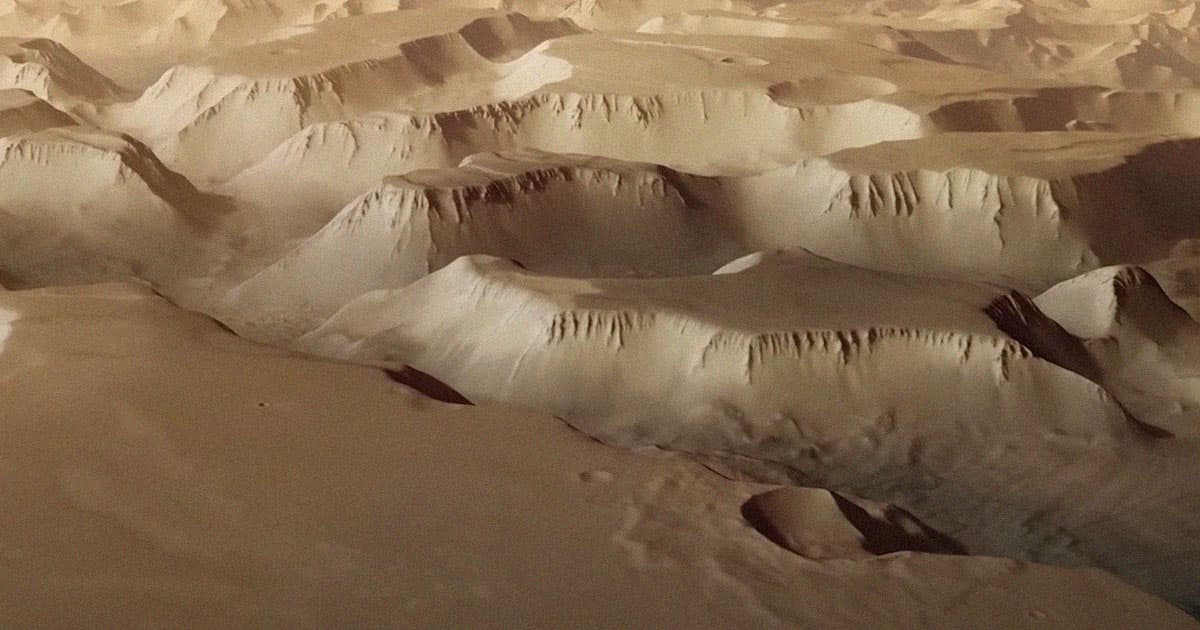Woah.
Labyrinth of Night
A stunning new video by the European Space Agency shows the vastness of Mars' gigantic 2,500-miles-across Valles Marineris, the Red Planet's equivalent of our Earth's Grand Canyon.
The flyover provides spectacular views of the canyon's Noctis Labyrinthus — 'labyrinth of night' — which itself spans 740 miles.
The unique system of steep valleys is flanked by the tallest volcanoes in the solar system, which scientists believe formed the vast canyons, causing the planet's crust to stretch upwards and form cracks billions of years ago.
And now, thanks to detailed measurements taken by satellites orbiting the planet, we get to see these unique geographical features in mind-blowing 3D.
Grandest Canyon
Of course, we're not looking at footage taken from a particularly daring aircraft soaring over the Martian canyons. The footage was rendered using detailed stereo images of the region taken by ESA's Mars Express orbiter and combined with existing topographic data.
The scale of the Noctis Labyrinthus is truly out-of-this-world. Some of the canyon's valleys measure up to 18.6 miles across and a vast 3.7 miles deep. To put those numbers into perspective, the entirety of the Grand Canyon measures 18 miles across and doesn't get deeper than 1.1 miles, or 6,000 feet.
Massive landslides have caused some of these canyon walls to collapse, sending copious amounts of sand across the valley floors. One of these landslides, spotted by NASA's Viking Orbiter, stretches a stunning 25 miles across the valley floor.
Raging winds have also formed massive fields of sand dunes in the otherword.
There's still a lot we don't know about Mars' titanic Valle Marineris. While the Grand Canyon was formed by the eroding power of the Colorado River, the Martian equivalent was largely the result of tectonic fractures of the planet's crust. But scientists believe water may still have played a role, altering the canyon's landscape billions of years ago.
More on the canyon: India's Mars Orbiter Captures Stunning Images of Red Planet's Canyon System
Share This Article
